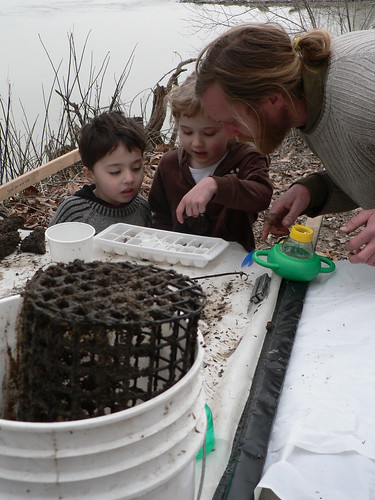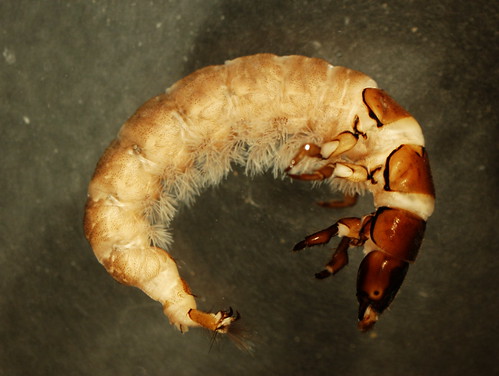Water Quality Monitoring
February 8, 2009
Club Medfly, Missouri River, rivermile 170
Club Medfly, Missouri River, rivermile 170
text by Steve Schnarr, data collection by Melanie Cheney & Jen Courtney, photos by Melanie Cheney & Amy Jungclaus
Later this year, the Missouri Stream Team program will be turning 20. Since 1989, 3,860 citizen groups have formed across the state, each focused on monitoring, restoring and educating others about their adopted stream. The program is collaboration between Mo. Dept. of Conservation, Mo. Dept. of Natural Resources, Conservation Federation of Mo. and thousands of citizens.
Missouri River Relief is Stream Team #1875. Our adopted “stream” is the Missouri River within the state of Missouri (several other stream teams, luckily, have adopted various stretches within that reach). Typical River Relief grandiosity!

One of the greatest benefits of Stream Teams is the free water quality monitoring training and equipment that is offered. They get right down in the stream with you, showing you how to sample the critters that live in there, show you how to test for several simple chemical attributes and teach how to record data on the physical changes of your stream over time.
Much of what we learned in these classes is in a completely different context on the Missouri River. Turbidity levels considered alarming in some streams are considered clear on the Missouri. Families of critters usually associated with clear Ozark creeks have their members that are adapted to the turbid, muddy and sandy water of the Big Muddy.

At this point, we are just experimenting with monitoring the big river, learning what we can and adapting to its erratic levels.
One of the tools for sampling macro-invertebrates on big, fluctuating rivers is an “artificial substrate basket”. It’s a coated wire cage that you fill with rocks, tie a very long line to, and toss in the current. The critters that like to live in rocks move right in. You pull the thing out three weeks later with a fine mesh net and count everything that lives in there.
Well, that’s the way it’s supposed to work.
In the fall of 2007, we tossed a basket. The line wasn’t long enough. Soon after, the river came up, covered the rock we tied the line to and that was the last we saw of it for most of the year! When the river dropped enough to show our rope, we’d try to yank the basket out, but it was stuck under rocks moved by the floods.
This January, though, the river was at the lowest it had been in a few years. I could wade out and dislodge the basket. So we invited Jen Courtney and her kids over, pulled the basket and checked it out.
The basket and the rocks inside were completely encrusted with caddisfly larvae cases – this messy, gooey mix of mucus, organic particles, sand and mud that the little wormlike larvae use to protect themselves as they develop. And there were countless thousands of the larvae. Dragonfly and massive stonefly larvae came crawling out of the mess. A clawless crawdad scuttled in the net. Melanie carefully tallied up the critters.
Jack and Liv were fascinated – plopping insects into an ice cube tray, spraying them down with a bottle.
Then we headed back to the river, using a kick net to sample from overturned rocks in the swift current below Cooper’s Landing. We also used a D-net to sample from a larger area of rocks.
Two days later, the river jumped again, dropped back down, and now it seems will be high for the rest of spring. Who knows?

(also check out our flickr photo gallery of the day...you too could have this much fun! Start your own Stream Team)
Thanks to Barry Poulton (USGS River Studies), Mark Van Patten, Amy Jungclaus and Chris Riggert (MDC) and Priscilla Stotts (DNR) for sharing their knowledge of sampling and ID. Amy and Barry teamed up on the beginnings of a digital Missouri River macroinvertebrate reference guide. Barry is supplying specimens of characteristic Big Muddy macros, and Amy is taking close-up, ID quality photos of them. We are posting them on our flickr site as a set. Thanks for sharing your awesome work, Barry and Amy.
Here's a picture Amy took of the caddisfly larvae that we found in such abundance that day, Hydropsyche orris. I think its common name is a spotted sedge fly.
 photo by Amy Jungclaus, MDC. Specimen provided by Barry Poulton, USGS River Studies.
photo by Amy Jungclaus, MDC. Specimen provided by Barry Poulton, USGS River Studies.

No comments:
Post a Comment